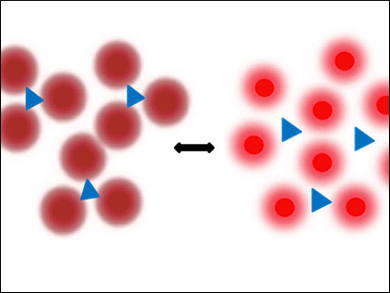It is of interest to be able to measure temperatures on the micro- or nanoscale, e.g., the intracellular temperatures of living organisms. There have been several recent approaches which use fluorescent semiconductor quantum dots or metal nanoclusters. Such materials generally have good quantum yields and photostabilities, however, they are often toxic, which limits their use in biological applications.
Chuanxi Wang and Chi Zhang, Tongji University, Shanghai, and Jiangnan University, Wuxi, both China, and colleagues have developed carbon nanodots that can be used as nanothermometers in living cells. The team used a microwave-assisted synthesis to carbonize p-phenylenediamine and form the nanodots. The material has a good quantum yield (15 %) and shows red fluorescence. The long wavelengths in the red region are desirable in medical applications, since they improve contrast against autofluorescence and background scattering of the organism being studied.
The material was used as a “turn-on” cellular temperature sensor, with the fluorescent signal becoming stronger with increasing temperature. The signal could be quenched by glutathione (GSH), which causes aggregation-induced fluorescence quenching. The signal could then be recovered by raising the temperature. The researchers see this as a promising platform for the eventual development of intracellular temperature gauges.
- Green Synthesis of Red-Emitting Carbon Nanodots as a Novel “Turn-on” Nanothermometer in Living Cells,
Chuanxi Wang, Kaili Jiang, Qian Wu, Jiapeng Wu, Chi Zhang,
Chem. Eur. J. 2016.
DOI: 10.1002/chem.201602795



